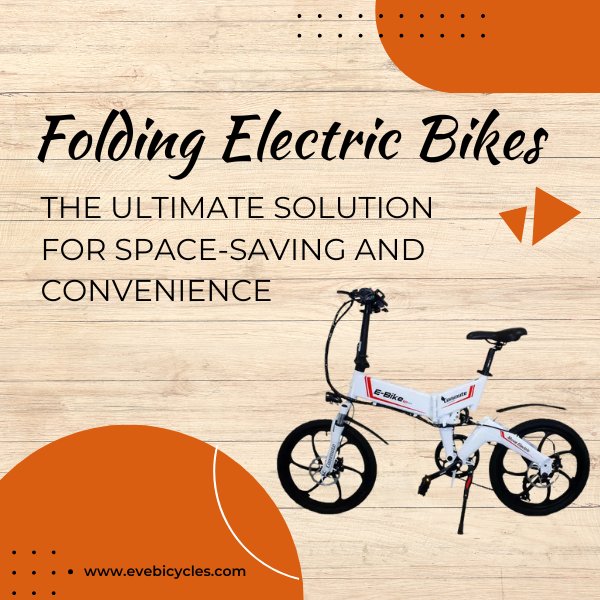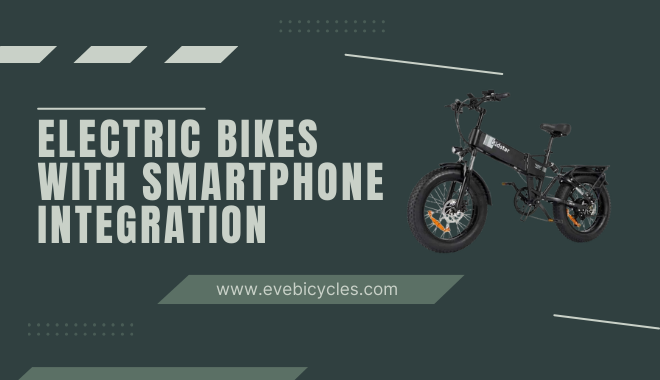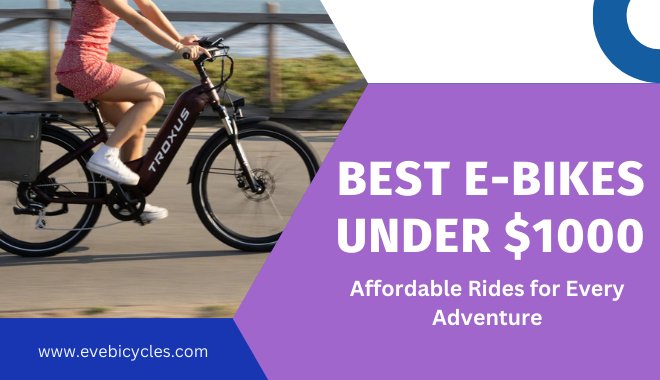Electric Bikes for Delivery Services: Revolutionizing the Way Goods Get Delivered
In recent years, the world of delivery services has undergone a massive transformation. The rise of e-commerce, coupled with the growing demand…
In recent years, the world of delivery services has undergone a massive transformation. The rise of e-commerce, coupled with the growing demand for faster and more eco-friendly delivery options, has led businesses to rethink how they transport goods. Traditional delivery vehicles, with their heavy emissions and high operating costs, are slowly being replaced by a more sustainable and cost-effective solution: electric bikes for delivery services. These smart, efficient, and eco-friendly bikes are changing the way products are delivered, especially in urban areas.
Whether it’s for food delivery, parcel services, or even courier businesses, electric bikes are becoming a go-to option for getting goods from one place to another quickly and efficiently. In this article, we’ll dive into why electric bikes are perfect for delivery services, the benefits they offer, and how they are making a huge impact on the logistics industry. We’ll also explore some key considerations for businesses thinking about making the switch and discuss a few popular electric bikes that are making waves in the delivery world.
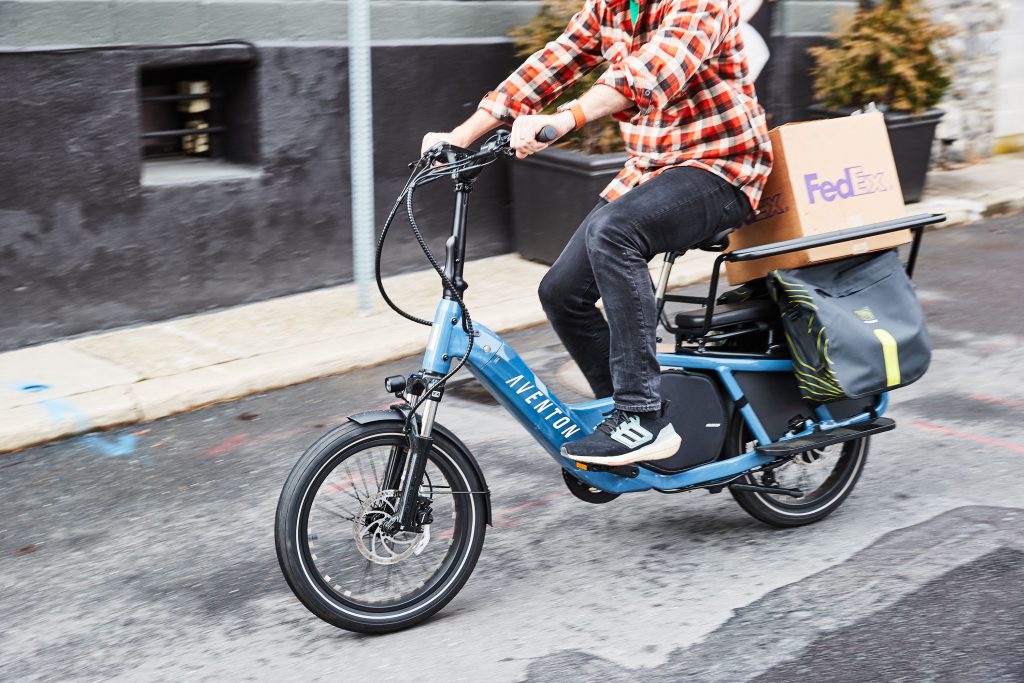
What Are Electric Bikes for Delivery Services?
Electric bikes (e-bikes) are bicycles that come with an integrated electric motor to assist with pedaling. The motor doesn’t replace pedaling entirely but provides an extra boost, especially useful for long rides, steep hills, or heavy loads. In the world of delivery, this is a game-changer. E-bikes for delivery services are specifically designed to carry goods—whether it’s food, packages, or even larger items like groceries—while providing a much-needed boost to the rider.
Delivery e-bikes come in various shapes and sizes, from small city bikes for urban deliveries to larger, more robust models designed to carry heavy cargo. These bikes are equipped with powerful motors, larger batteries, and sturdy racks to carry deliveries safely and efficiently.
Why Are Electric Bikes the Future of Delivery Services?
Electric bikes are not just a passing trend—they’re a sustainable, practical solution that is rapidly becoming a favorite among delivery services. Here’s why:
1. Eco-Friendly Transportation
One of the biggest reasons electric bikes are becoming so popular in the delivery industry is their eco-friendly nature. Traditional delivery trucks and vans, especially those that run on gas or diesel, contribute significantly to air pollution and carbon emissions. In contrast, electric bikes produce zero emissions, making them a greener alternative for businesses looking to reduce their carbon footprint.
Cities around the world are also starting to crack down on air pollution, with some even implementing low-emission zones where only electric vehicles are allowed. By adopting electric bikes, delivery services can comply with these regulations while still getting their products to customers quickly and efficiently.
2. Cost-Effective Alternative
Running a traditional delivery fleet can be incredibly expensive. The costs of fuel, maintenance, parking, insurance, and the wear and tear on delivery vans or trucks add up quickly. On top of that, there are the constant rising gas prices to worry about. In contrast, electric bikes are much cheaper to maintain and run.
- Lower fuel costs: Charging an electric bike is far cheaper than refueling a car or van.
- Minimal maintenance: E-bikes require significantly less maintenance than traditional vehicles. There are fewer moving parts, and there’s no engine to maintain.
- No parking fees: E-bikes can easily be parked anywhere, eliminating parking fees and the need to rent expensive parking spaces.
With lower upfront and operating costs, electric bikes provide businesses with a way to deliver goods more efficiently without breaking the bank.
3. Speed and Efficiency
Electric bikes are faster and more efficient than traditional delivery vehicles in urban environments. Traffic congestion is a huge problem in cities, and delivery trucks often get stuck in jams, resulting in late deliveries and frustrated customers. E-bikes, on the other hand, can navigate through traffic more easily, allowing delivery riders to zip through narrow streets, cycle lanes, and pedestrian areas without the hassle of gridlock.
Additionally, with the electric motor providing pedal assistance, riders don’t have to exert as much physical effort. This means they can cover longer distances and deliver more in less time, improving overall efficiency and productivity.
4. Access to Narrow or Restricted Areas
Many city centers have areas that are restricted to traditional vehicles. These could include pedestrian-only zones, bike lanes, or areas with limited vehicle access. Electric bikes are the perfect solution in these situations, as they can easily navigate through tight spaces and restricted zones where cars and vans cannot go. This gives delivery services more flexibility in terms of routes and allows for faster deliveries.
5. Reduced Traffic Congestion
As more businesses and individuals adopt electric bikes for deliveries, fewer traditional vehicles will be on the road. This can help reduce traffic congestion, leading to a smoother and more efficient flow of goods in cities. Plus, fewer delivery vans on the road means fewer emissions, which benefits the environment and the overall health of city dwellers.
6. Versatility
Electric bikes come in all shapes and sizes, making them versatile enough for different types of deliveries. Whether you need to carry small packages, take large boxes, or deliver food, there’s an e-bike model designed to suit your specific needs. Many electric bikes for delivery are built with sturdy cargo racks, baskets, or even custom delivery boxes to ensure that goods are transported safely and securely.
The Key Considerations for Delivery Businesses

Before jumping into the world of electric bikes for delivery services, businesses need to consider a few key factors to ensure that the transition is smooth and successful.
1. Choosing the Right E-Bike
Not all electric bikes are created equal, and choosing the right model for your delivery service is crucial. Factors to consider include:
- Weight capacity: Ensure that the e-bike can handle the weight of the items you’ll be delivering. Some e-bikes come with extra-heavy-duty cargo racks, while others are better suited for lighter packages.
- Motor power: Depending on the terrain of your delivery route, you’ll need a motor with enough power to tackle hills or long distances. For flat urban areas, a 250W motor may be sufficient, but for hilly routes or heavier loads, a 500W or higher motor might be necessary.
- Battery life: The range of an e-bike is important, especially for businesses that require deliveries over long distances. Opt for a bike with a battery that can last through an entire day’s work or consider bikes with removable batteries that can be swapped out mid-shift.
- Cargo space: Make sure the e-bike has enough cargo space for the type of deliveries you handle. Some bikes are equipped with large baskets or panniers, while others may need additional accessories like cargo trailers or boxes.
- Durability and build: Delivery bikes endure a lot of wear and tear, so it’s important to choose a model that’s built to last. Look for a bike made from durable materials and check the warranty for peace of mind.
2. Training for Delivery Riders
While electric bikes make delivery easier and faster, proper training is still essential. Delivery riders need to be familiar with how the e-bikes work, especially when it comes to handling the throttle, motor assistance, and brake systems. Riders should also know how to pack and secure deliveries safely on the bike to prevent damage during transit.
3. Storage and Charging
One of the main challenges with electric bikes for delivery services is finding places to store and charge them, especially in cities where space is limited. Delivery companies need to ensure they have a dedicated area for parking and charging bikes. Some businesses opt for charging stations in their warehouses or office spaces, while others may have mobile charging units to charge bikes during the day.
Popular Electric Bikes for Delivery Services
Several electric bike models have become popular among delivery services, thanks to their performance, cargo space, and durability. Here are a few worth considering:
1. Rad Power Bikes RadRunner
Rad Power Bikes is one of the leading manufacturers of electric bikes for delivery services. The RadRunner is an excellent choice for delivery businesses due to its versatility, durability, and large cargo capacity. It’s built with a powerful 750W motor and can carry up to 300 pounds of cargo, making it perfect for delivering heavier packages.
2. Tern GSD S10
The Tern GSD S10 is another popular choice for businesses needing a reliable and robust e-bike. It features a 500W motor and has a cargo capacity of up to 440 pounds. The bike is highly customizable, with options for adding large cargo boxes, baskets, and even a second rider. This makes it ideal for businesses that need to carry both large packages and multiple deliveries.
3. Xtracycle Edgerunner
The Xtracycle Edgerunner is designed for heavy-duty cargo transportation. It features a long-tail design, making it possible to carry large packages or multiple smaller deliveries. The motor is powerful enough for hilly routes, and the bike has a range of up to 50 miles on a single charge, which is perfect for long shifts.
4. Brompton Electric
For businesses focused on quick, light deliveries in tight urban spaces, the Brompton Electric folding e-bike is an excellent option. It’s small, foldable, and features a 250W motor. While it’s not designed for heavy cargo, it’s perfect for fast food delivery or small parcel services in densely populated areas.
The Future of Electric Bikes in Delivery Services
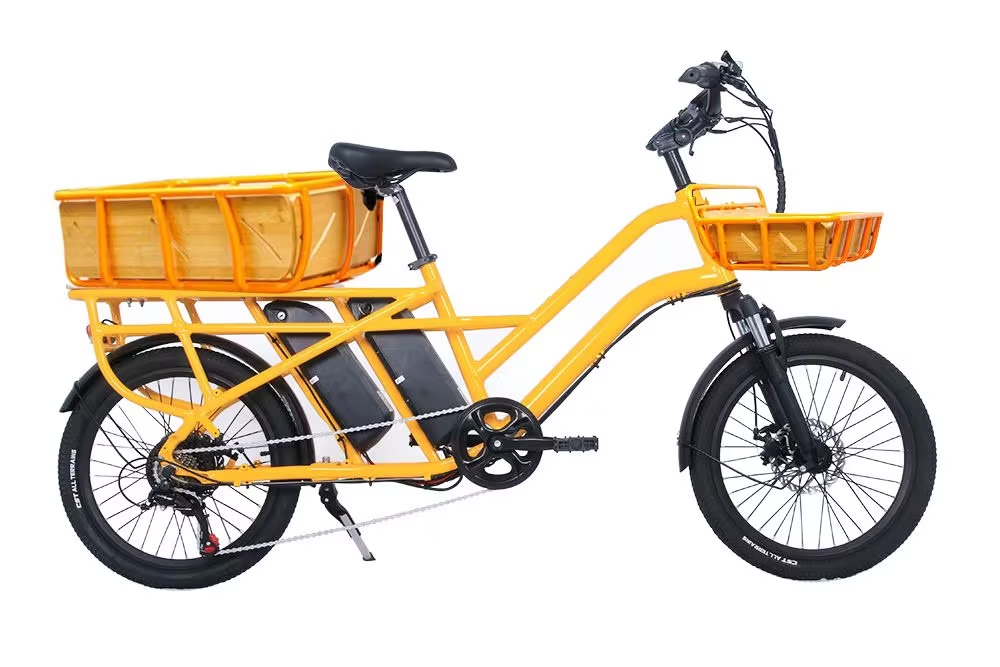
The future of electric bikes in delivery services is incredibly promising. As the demand for fast, sustainable, and cost-effective delivery options continues to rise, electric bikes are well-positioned to play an even more significant role. Let’s explore some potential trends and innovations that could shape the future of e-bike deliveries.
1. Integration with Smart Technology
As technology evolves, so do the capabilities of electric bikes. The future of e-bikes for delivery services may involve the integration of smart technology, allowing businesses to track deliveries in real-time, monitor battery levels, and even optimize delivery routes. For example:
- GPS tracking and navigation: With integrated GPS, delivery riders can be given optimized routes based on traffic conditions, road closures, or delivery urgency. This could reduce delivery times and fuel consumption.
- Battery management systems: In the future, advanced battery management systems might be able to predict when a battery is nearing the end of its lifespan, allowing businesses to schedule replacements before they cause disruptions.
- Remote diagnostics: Smart sensors could alert riders and companies to any mechanical issues with the e-bike, enabling preventative maintenance and reducing downtime.
These smart technologies would not only improve the efficiency of delivery operations but also enhance the customer experience by providing faster and more reliable deliveries.
2. Faster Charging and Longer Battery Life
As electric bike technology advances, we can expect to see improvements in battery life and charging times. Today’s e-bike batteries can take several hours to charge fully, but in the future, we could see fast-charging solutions that allow businesses to charge bikes quickly between deliveries. Imagine a system where a delivery bike can be recharged in under 30 minutes, making it possible for a rider to complete a shift without worrying about battery depletion.
Additionally, batteries are likely to become more energy-dense, meaning they will last longer on a single charge. This will be especially beneficial for businesses with long-distance delivery routes, as it will reduce the need for frequent recharging and increase the range of each bike.
3. More Customizable Options for Delivery E-Bikes
As the demand for electric bikes in the delivery sector grows, manufacturers will likely offer even more customizable options. Delivery companies may be able to tailor bikes to suit their specific needs, whether they require extra cargo space, additional motor power, or specialized accessories like weather-resistant boxes for food deliveries.
For example:
- Modular designs: E-bikes could be designed with modular components that allow businesses to adjust their bikes depending on the delivery type (small parcels, large goods, food delivery, etc.).
- Adjustable motors: Riders could have the ability to customize the level of motor assistance based on the type of terrain or load they are carrying, allowing for more flexibility during deliveries.
Such innovations would allow delivery services to choose bikes that are perfectly suited for their unique needs, optimizing both performance and efficiency.
4. Electric Cargo Bikes
While electric bikes are already transforming delivery services, electric cargo bikes are gaining traction, especially for businesses that need to carry larger, heavier loads. These bikes feature a sturdy, extended frame that can accommodate large boxes, multiple deliveries, or even larger items like furniture or groceries.
In the future, we can expect to see more specialized electric cargo bikes equipped with additional features like:
- Larger cargo compartments: For businesses that need to carry bulky items, future electric cargo bikes will likely offer even more spacious compartments or removable storage units.
- Enhanced stability: Cargo bikes for delivery services could be designed with enhanced suspension systems to provide a smoother ride when carrying heavy or fragile items.
- Electric-assisted loading and unloading: Advanced electric cargo bikes could be equipped with mechanisms that assist with the loading and unloading process, making it easier for riders to handle heavy or bulky goods.
As the demand for last-mile deliveries grows, electric cargo bikes could become even more essential for businesses looking to deliver large items efficiently and sustainably.
5. Increased Adoption by Large Logistics Companies
As electric bikes for delivery services continue to prove their worth, larger logistics and courier companies are expected to adopt e-bikes as part of their fleet. These companies already use trucks, vans, and other vehicles for long-haul deliveries, but adding electric bikes for short-distance deliveries could help them improve efficiency in urban areas and reduce their carbon emissions.
Some large logistics companies are already integrating electric bikes into their operations. For example, DHL and UPS have tested e-bikes in select urban areas for food delivery and small parcel services. In the future, we may see these companies ramping up their use of electric bikes in order to meet both sustainability goals and the growing demand for faster, more flexible deliveries.
6. Widespread Use in Global Cities
Electric bikes for delivery services are already popular in some cities, but the trend is likely to spread to even more regions. Cities with heavy traffic congestion, limited parking spaces, and a focus on sustainability will be the ideal locations for widespread adoption of e-bikes. In fact, as cities worldwide aim to reduce their environmental footprint and improve air quality, electric bikes could become an essential component of urban logistics.
We may also see government incentives and regulations encouraging the use of electric bikes for delivery. Cities could offer subsidies or tax breaks for businesses that use e-bikes, or implement regulations that make it easier for delivery services to operate using zero-emission vehicles.
7. Collaboration with Shared Mobility Services
Another exciting possibility is the integration of electric bikes into shared mobility services. Just as bike-sharing programs have become popular in cities, we may see the rise of e-bike-sharing services specifically designed for last-mile deliveries. In this model, delivery businesses could rent electric bikes from a shared fleet to complete their deliveries, reducing the need for large fleets of vehicles and promoting flexibility.
For example, a business could rent e-bikes on an hourly or daily basis depending on delivery volume, helping them manage costs while still providing fast, efficient service. Shared mobility services could also allow businesses to scale up or down based on demand, ensuring that they always have the right number of bikes available.
How Delivery Services Can Prepare for the Shift to Electric Bikes
If you’re a delivery business owner thinking about making the transition to electric bikes, here are a few steps you can take to prepare for the shift:
1. Assess Your Delivery Needs
Take a close look at your current delivery routes and volume. Consider factors like:
- The average distance per delivery
- The type of goods being delivered
- Traffic conditions and city infrastructure
- Rider experience and physical demands
This will help you determine what kind of e-bike is best suited to your operations and whether electric bikes can handle the demands of your delivery service.
2. Choose the Right E-Bike Model
As mentioned earlier, electric bikes come in different shapes and sizes, so it’s important to choose one that fits your specific needs. Think about the type of cargo you’ll be carrying, the terrain your riders will cover, and how much range is necessary for a full day’s shift.
3. Create a Charging Infrastructure
Depending on the size of your fleet, you may need to set up a dedicated charging infrastructure to keep your bikes powered up. Consider creating a centralized charging station where bikes can be charged overnight or during breaks, or explore mobile charging options to keep bikes running during the day.
4. Provide Rider Training
Training is key to ensuring that your delivery riders can use electric bikes safely and efficiently. Make sure your riders know how to handle the bike’s motor, brake system, and cargo setup. It’s also important to educate them on bike maintenance and safety protocols.
5. Monitor Performance and Adjust
As you begin integrating electric bikes into your fleet, make sure to track their performance. Monitor battery life, delivery times, and overall efficiency to determine if any adjustments are needed. If your business expands, you may need to scale up the number of bikes you use or fine-tune your routes for maximum efficiency.
Conclusion: Embracing the Future of Delivery with Electric Bikes
Electric bikes for delivery services offer an exciting glimpse into the future of urban logistics. With their efficiency, eco-friendliness, cost-effectiveness, and ability to navigate congested city streets, electric bikes are poised to change the way we think about last-mile delivery. They offer significant benefits for businesses, consumers, and the environment, making them a crucial part of the sustainable, efficient delivery ecosystem.
As e-bike technology continues to evolve, businesses will have even more options and features to choose from, allowing them to tailor their delivery operations to meet their unique needs. The transition to electric bikes may require an upfront investment, but the long-term savings and environmental benefits will make it a smart choice for delivery companies looking to stay ahead of the curve.
The future of delivery is electric, and it’s here to stay. Whether you’re a small business owner or a large logistics provider, it’s time to consider how electric bikes can transform your delivery service for the better.
The rise of electric bikes for delivery services is not just a trend—it’s a practical, efficient, and eco-friendly solution that is transforming the logistics industry. With lower costs, higher speed, and minimal environmental impact, electric bikes offer a viable alternative to traditional delivery vehicles.
By investing in electric bikes, delivery companies can improve their operational efficiency, reduce their carbon footprint, and contribute to a cleaner

